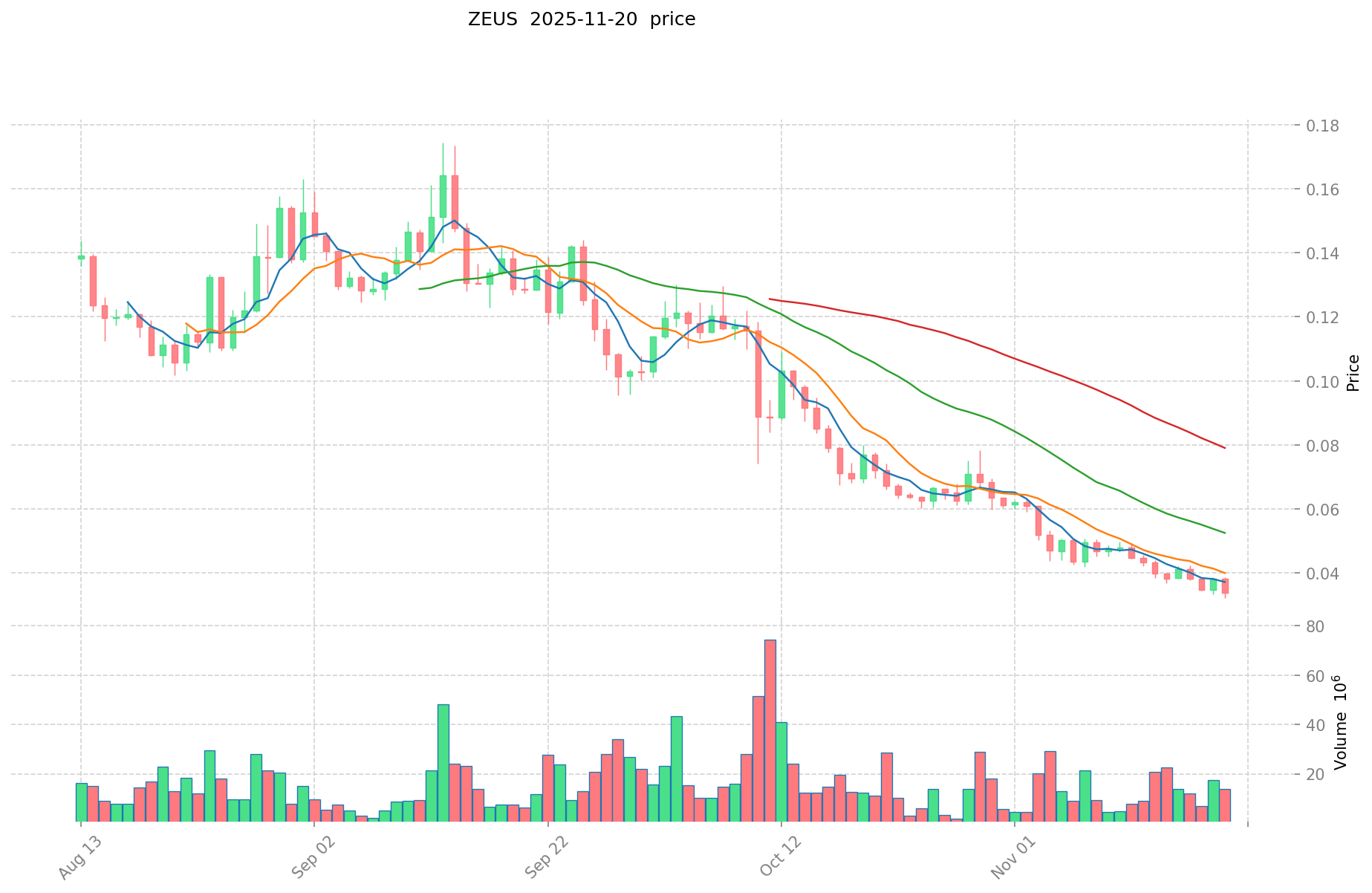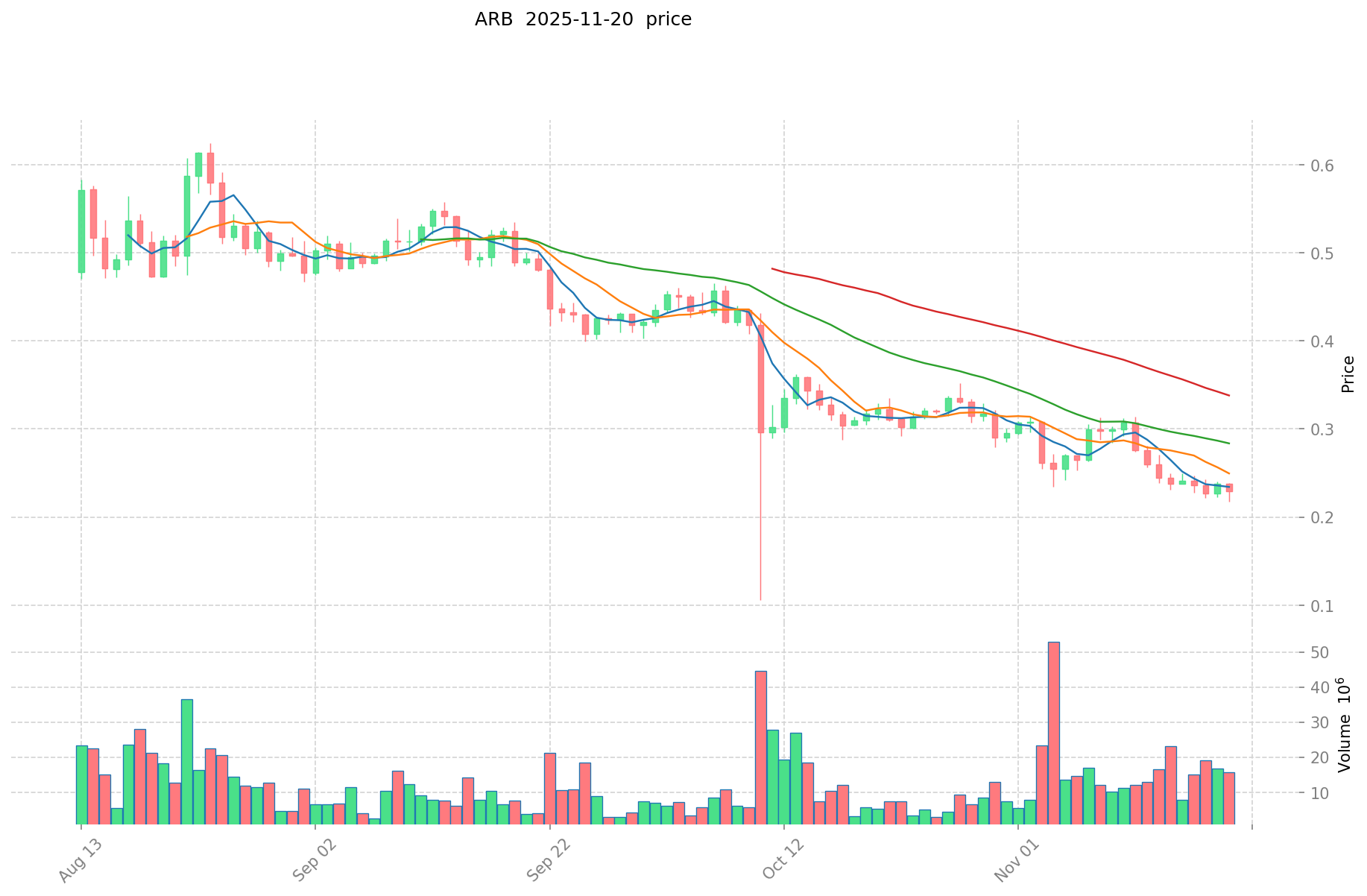ZEUS vs ARB: The Battle for Crypto Supremacy in Decentralized Finance
Introduction: ZEUS vs ARB Investment Comparison
In the cryptocurrency market, the comparison between ZEUS and ARB has been an unavoidable topic for investors. The two not only show significant differences in market cap ranking, application scenarios, and price performance, but also represent different positioning in the crypto asset space.
Zeus Network (ZEUS): Launched as a cross-chain communication layer implemented on SVM, it aims to introduce Bitcoin liquidity to Solana through its first DApp APOLLO.
Arbitrum (ARB): Introduced as an Ethereum extension solution, it enables high-throughput, low-cost smart contracts while maintaining trustless security. ARB serves as the governance token for the Arbitrum ecosystem.
This article will provide a comprehensive analysis of the investment value comparison between ZEUS and ARB, focusing on historical price trends, supply mechanisms, institutional adoption, technical ecosystems, and future predictions, attempting to answer the question investors are most concerned about:
"Which is the better buy right now?"
I. Price History Comparison and Current Market Status
ZEUS and ARB Historical Price Trends
- 2024: ZEUS reached its all-time high of $1.1485 on April 8, 2024.
- 2023: ARB reached its all-time high of $4.00 on March 23, 2023.
- Comparative analysis: In the current market cycle, ZEUS has fallen from its high of $1.1485 to a current price of $0.03537, while ARB has dropped from $4.00 to $0.2353.
Current Market Situation (2025-11-20)
- ZEUS current price: $0.03537
- ARB current price: $0.2353
- 24-hour trading volume: ZEUS $544,954.01 vs ARB $3,243,700.28
- Market Sentiment Index (Fear & Greed Index): 11 (Extreme Fear)
Click to view real-time prices:
- Check ZEUS current price Market Price
- Check ARB current price Market Price


II. Core Factors Affecting ZEUS vs ARB Investment Value
Supply Mechanism Comparison (Tokenomics)
-
ZEUS: Fixed maximum supply of 1 billion ZEUS tokens with 400 million (40%) allocated to community mining, creating a deflationary model
-
ARB: Total supply of 10 billion tokens with controlled distribution schedule where 42.1% is allocated to the Arbitrum DAO treasury and 17.5% to future ecosystem development
-
📌 Historical Pattern: Limited supply tokens like ZEUS tend to experience higher price volatility during bull markets due to scarcity, while ARB's larger but controlled supply aims for more sustainable growth through community governance.
Institutional Adoption and Market Applications
- Institutional Holdings: ARB has gained more institutional traction as evidenced by its listing on major exchanges like Binance and Coinbase, while ZEUS is still in early adoption phase
- Enterprise Adoption: ARB has established a stronger position in DeFi applications through its Layer 2 scaling solution, while ZEUS is positioning itself for cross-chain applications
- Regulatory Attitudes: Both projects face similar regulatory scrutiny as utility tokens, though ARB benefits from greater regulatory clarity due to its established position in the market
Technical Development and Ecosystem Building
- ZEUS Technical Upgrades: Focus on cross-chain DeFi applications and multi-chain interoperability with unique authorization mechanism
- ARB Technical Development: Continued optimization of its Layer 2 scaling solution with emphasis on transaction throughput and security improvements
- Ecosystem Comparison: ARB has a more developed ecosystem with established DeFi protocols and applications, while ZEUS is building its ecosystem with emphasis on multi-chain compatibility and lower transaction costs
Macroeconomic Factors and Market Cycles
- Performance During Inflation: ARB has demonstrated more stability during inflationary periods due to its more established market position and utility
- Monetary Policy Impact: Both tokens are affected by broader crypto market sentiment driven by interest rates and USD strength
- Geopolitical Factors: Both projects aim to facilitate cross-border transactions, with ARB currently having wider global adoption and usage
III. 2025-2030 Price Prediction: ZEUS vs ARB
Short-term Prediction (2025)
- ZEUS: Conservative $0.0251 - $0.0354 | Optimistic $0.0354 - $0.0404
- ARB: Conservative $0.1765 - $0.2354 | Optimistic $0.2354 - $0.3177
Mid-term Prediction (2027)
- ZEUS may enter a growth phase, with expected prices of $0.0328 - $0.0465
- ARB may enter a bullish market, with expected prices of $0.2400 - $0.5041
- Key drivers: Institutional fund inflow, ETF, ecosystem development
Long-term Prediction (2030)
- ZEUS: Base scenario $0.0578 - $0.0763 | Optimistic scenario $0.0763+
- ARB: Base scenario $0.5253 - $0.7459 | Optimistic scenario $0.7459+
Disclaimer: This analysis is based on historical data and market projections. Cryptocurrency markets are highly volatile and unpredictable. This information should not be considered as financial advice. Always conduct your own research before making investment decisions.
ZEUS:
| 年份 | 预测最高价 | 预测平均价格 | 预测最低价 | 涨跌幅 |
|---|---|---|---|---|
| 2025 | 0.0404358 | 0.03547 | 0.0251837 | 0 |
| 2026 | 0.040230074 | 0.0379529 | 0.035675726 | 7 |
| 2027 | 0.04651886953 | 0.039091487 | 0.03283684908 | 10 |
| 2028 | 0.0633516638322 | 0.042805178265 | 0.03724050509055 | 21 |
| 2029 | 0.062632536837348 | 0.0530784210486 | 0.043524305259852 | 50 |
| 2030 | 0.076369232204725 | 0.057855478942974 | 0.041077390049511 | 63 |
ARB:
| 年份 | 预测最高价 | 预测平均价格 | 预测最低价 | 涨跌幅 |
|---|---|---|---|---|
| 2025 | 0.31779 | 0.2354 | 0.17655 | 0 |
| 2026 | 0.4093606 | 0.276595 | 0.2323398 | 17 |
| 2027 | 0.504177366 | 0.3429778 | 0.24008446 | 45 |
| 2028 | 0.47440689296 | 0.423577583 | 0.23296767065 | 80 |
| 2029 | 0.6016495988932 | 0.44899223798 | 0.2828651099274 | 90 |
| 2030 | 0.745955704179972 | 0.5253209184366 | 0.488548454146038 | 123 |
IV. Investment Strategy Comparison: ZEUS vs ARB
Long-term vs Short-term Investment Strategies
- ZEUS: Suitable for investors focused on cross-chain potential and emerging ecosystems
- ARB: Suitable for investors seeking established Layer 2 solutions and DeFi applications
Risk Management and Asset Allocation
- Conservative investors: ZEUS 20% vs ARB 80%
- Aggressive investors: ZEUS 40% vs ARB 60%
- Hedging tools: Stablecoin allocation, options, cross-currency combinations
V. Potential Risk Comparison
Market Risk
- ZEUS: Higher volatility due to lower market cap and trading volume
- ARB: Potential market saturation in Layer 2 solutions
Technical Risk
- ZEUS: Scalability, network stability
- ARB: Centralization concerns, potential security vulnerabilities
Regulatory Risk
- Global regulatory policies may have different impacts on both tokens
VI. Conclusion: Which Is the Better Buy?
📌 Investment Value Summary:
- ZEUS advantages: Cross-chain potential, deflationary model, lower entry point
- ARB advantages: Established ecosystem, institutional adoption, Layer 2 scaling solution
✅ Investment Advice:
- Novice investors: Consider a larger allocation to ARB for its established position
- Experienced investors: Balanced approach with both tokens, adjusting based on risk tolerance
- Institutional investors: Focus on ARB for its liquidity and ecosystem, while monitoring ZEUS for potential growth
⚠️ Risk Warning: The cryptocurrency market is highly volatile. This article does not constitute investment advice. None
VII. FAQ
Q1: What are the main differences between ZEUS and ARB? A: ZEUS is a cross-chain communication layer on SVM, aiming to bring Bitcoin liquidity to Solana, while ARB is an Ethereum extension solution for high-throughput, low-cost smart contracts. ZEUS has a fixed supply of 1 billion tokens, while ARB has a total supply of 10 billion tokens with a controlled distribution schedule.
Q2: Which token has shown better price performance historically? A: ARB reached its all-time high of $4.00 in March 2023, while ZEUS peaked at $1.1485 in April 2024. Currently, ARB is trading at $0.2353, and ZEUS at $0.03537, both having experienced significant drops from their all-time highs.
Q3: How do the ecosystems of ZEUS and ARB compare? A: ARB has a more developed ecosystem with established DeFi protocols and applications, benefiting from its position as an Ethereum Layer 2 solution. ZEUS is building its ecosystem with a focus on multi-chain compatibility and lower transaction costs, but is still in an earlier stage of development.
Q4: What are the long-term price predictions for ZEUS and ARB? A: By 2030, ZEUS is predicted to reach $0.0578 - $0.0763 in a base scenario, with an optimistic scenario of $0.0763+. ARB is expected to reach $0.5253 - $0.7459 in a base scenario, with an optimistic scenario of $0.7459+.
Q5: How should investors allocate their assets between ZEUS and ARB? A: Conservative investors might consider allocating 20% to ZEUS and 80% to ARB, while more aggressive investors could opt for 40% ZEUS and 60% ARB. The exact allocation should be based on individual risk tolerance and investment goals.
Q6: What are the main risks associated with investing in ZEUS and ARB? A: ZEUS faces higher volatility due to lower market cap and trading volume, as well as potential scalability and network stability issues. ARB risks include potential market saturation in Layer 2 solutions and centralization concerns. Both tokens are subject to regulatory risks depending on global policies.
Share
Content